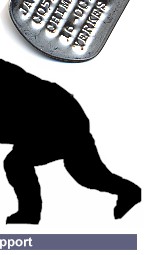






|
||||||||||||||||||||||||||||||||||||||||||||||||||||||||||||||||||||||||||||||||||||||||||||||||||||||||||||||||||||||||||||||||||||||||||||||||||||||||||||||||||||||||||||||||||||||||||||||||||||||||||||||||||||||||||||||||||||||||||||||||||||||||||||||||||||||||||||||||||||||||||||||||||||||||||||||||||||||||||||||||||||||||||||||||||||||||||||||||||||||||||
The UCLA-VA Vervet Monkey Research Colony University of California Los Angeles Vervet #1991-016 1991-016
1991-016 was born on June 15, 1991 to Vervet # 1980-001. She
recently turned twelve years old. She has a yellow “Y”
on her body, which makes her stand out from the other vervets.
She is also missing a thumb on her left hand and one-quarter of
her tail, which is scarred with old wounds. She has been tattooed
with the number 9116. This graceful, beautiful, and unique monkey
will no doubt live her entire life in enclosure B11-Y at the Vervet
Research Center (VRC), otherwise known as the UCLA-VA Vervet Monkey
Research Colony in Sepulveda, California.
Lynn Fairbanks' experimental subjects
Vervet monkeys live naturally throughout southern, eastern, and
western Africa; they prefer riverine woodlands. The monkeys at
UCLA are descended from 54 wild-caught monkeys trapped between
1975 and 1987 from an introduced population on St. Kitts, West
Indies. A concerned Primate Freedom Tag wearer, through a Freedom Of
Information Act (FOIA) request, received medical records for 1991-016,
which begin documenting her life in March of 1992 (one year old)
and end on December 2001 (ten years old). At the last round up,
she was 18 inches long and weighed 13 pounds. Read
the request letters and documents she received here. In her short twelve years, she has: · Had blood taken from her femoral vein 17 times; · Been tested for TB 10 times; · Given birth 4 times; · Been dewormed 3 times; · Was wounded behind her left shoulder; · Had a swollen right eye; · Had cerebrospinal fluid taken every year. About the Study: 1991-016 is an involuntary research subject in a study by Lynn
Fairbanks (lfairbanks@mednet.ucla.edu). Lynn was awarded $1.25
million for a five-year study on the "Behavioral Genetics
of Impulsivity." 1991-016 is one of 725 monkeys involved
in this study, being paid for by the National Institute of Mental
Health (NIMH). The National Institute of Mental Health is funded
by taxpayer dollars. In order to measure impulsivity, 1991-016 was tested in the Intruder
Challenge test and the Novelty Challenge test at the age of 2
and 4, and then twice more as an adult. These tests are “used
to measure impulsivity and other dimensions of temperament in
response to a social stimulus. During an Intruder Challenge test
session, all group members are locked into the indoor night-room
except for a subgroup of 3-4 individuals of the same age-sex class
that are left in the outdoor area of the home enclosure. An unfamiliar
adult animal in an individual cage is placed adjacent to the outer
chain link fence and the subjects’ responses are scored
for 30 minutes. “In the Novelty Challenge Test, subjects are removed from
the home group and transferred to an individual cage in the testing
room at the Vervet Research Center. They are presented with a
series of three novel objects. . . within arms reach of the cage.
Behavior is scored during stimulus presentation and control periods.
At the end of the test session, subjects are anesthetized and
a blood sample is collected to measure cortisol levels.” “Following the Novelty Challenge blood sample collection,
while the animal is still anesthetized, an activity meter. . .
is attached to the animal’s identification collar . . .
that records and stores data on movement. The animals wear the
monitors in the home group for a two-week period.” Comment: Like every other monkey being held captive by a primate vivisector,
1991-016’s life is controlled by the whims of idle curiosity.
Unlike threats in the wild, the yearly round up she endures is
inescapable. The actions of the humans around her must seem odd
and ever threatening. Like every other vivisector using monkeys, Lynn Fairbanks must
feel that any trivial bit of knowledge gleaned from her manipulations
of these animals is ample justification for anything she might
decide to do to them. We disagree. Our hearts and thoughts are with 1991-016 and the other 725 vervets
to whom Lynn Fairbanks has been given access. Our deepest thanks to primate advocate Joy Kennedy for her compassion
and persistence. Speak out. Your silence signals your acceptance.
Home Page | Our Mission | News |
||
